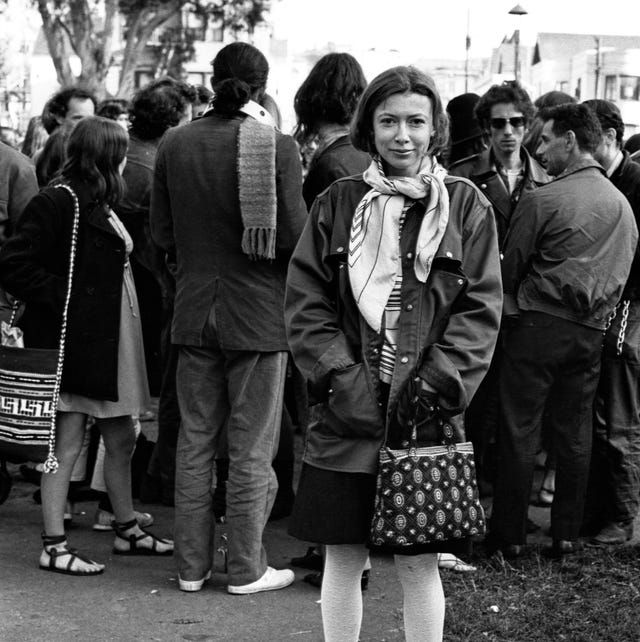Products You May Like

Ted Streshinsky Photographic ArchiveGetty Images
Joan Didion, the American writer whose incisive observations of counterculture in the ’60s and ’70s established her as a star in the literary world, died of Parkinson’s disease on Thursday in her Manhattan home, The New York Times has confirmed. She was 87.
An inspiration for several generations of writers, particularly women, Didion was also embraced by the fashion world, starring in campaigns for Gap in 1989 and Celine in 2015. In her later years, she became a prominent thinker on the subject of grief, writing two books meditating on the loss of her husband and daughter.
Born in Sacramento, California on December 5, 1934, Didion was a pioneer in the age of New Journalism, a literary style marked by novelistic and immersive storytelling, alongside contemporaries Truman Capote, Hunter S. Thompson, and Gay Talese. She became known for her keen social and political commentary, penetrating through the noise of anti-establishment sentiments, the gilded nature of life in Hollywood, and the insidious alliance between the political and media classes with unflappable poise.
Her home state of California also served as a frequent, albeit sometimes bleak, muse, as indicated in groundbreaking works like Some Dreamers of the Golden Dream and The Santa Ana. In 1977, she told the Paris Review,
Well, I grew up in a dangerous landscape. I think people are more affected than they know by landscapes and weather. Sacramento was a very extreme place… Those extremes affect the way you deal with the world. It so happens that if you’re a writer the extremes show up. They don’t if you sell insurance.
After graduating from the University of California, Berkeley with a degree in English in 1956, Didion won an essay contest that awarded her a job in Vogue magazine. She went on to publish highly acclaimed collections of nonfiction, including Slouching Towards Bethlehem and The White Album, as well as novels like Run River, Play It as It Lays, and Democracy. She adapted several screenplays, often co-writing with husband John Gregory Dunne, such as the 1976 iteration of A Star Is Born.
Following the deaths of Dunne in 2003 and their daughter Quintana Roo Dunne Michael in 2005, grief became a common theme for Didion. The Year of Magical Thinking and Blue Nights both contemplate their loss; the former won the 2005 National Book Award for Nonfiction.
Grappling with her perspective on her craft, she said in 1976,
I knew that I was no legitimate resident in any world of ideas. I knew I couldn’t think. All I knew then was what I couldn’t do. All I knew then was what I wasn’t, and it took me some years to discover what I was.
Which was a writer.
This content is created and maintained by a third party, and imported onto this page to help users provide their email addresses. You may be able to find more information about this and similar content at piano.io
